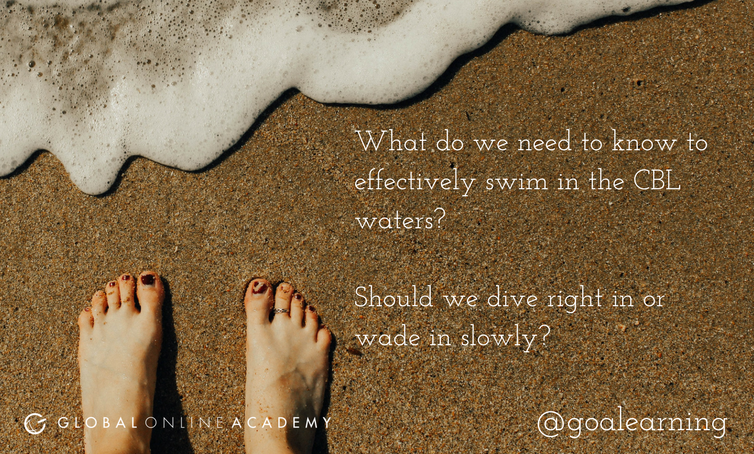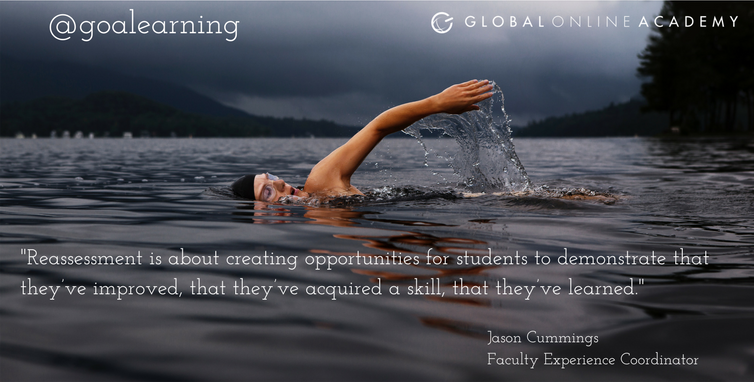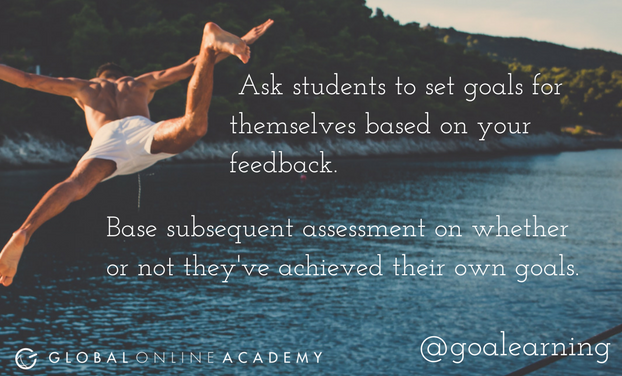Adopting Competency-based Learning: 4 First Steps for Teachers and Schools
The summer months bring many educators to the water, be it oceans, lakes, or swimming pools. We close our laptops, put away the required reading, and try to clear our minds. No matter how much we try to get away from it all, there is a part of our teacherly minds that stands on another shore, preparing to plunge back into the work of teaching and learning.Now, more than ever, many schools and educators are looking out over the uncertain waters of a transition to competency-based learning (CBL). Among the many waves lapping at our toes are the following questions:
How do we navigate the latest trends and research surrounding CBL?
What does a fully competency-based program/classroom look like?
What do we need to know to effectively swim in the CBL waters?
Should we dive right in or wade in slowly?
A fully competency-based program will offer students greater personalization and the opportunity to receive personal feedback on clear, tangible learning outcomes. Perhaps most fundamentally, students will progress based on mastery of skills and concepts rather than by a calendar or seat time. Comfortable getting in over their heads, some teachers will dive straight off the dock and do a flip or a cannonball. There are sure to be some bellyfloppers in the crowd who’ll make a mess of their work before they find the right method. And while it may not always be graceful, they’ll all feel refreshed and energized by the coolness of a new approach. Some of us would rather dip our toes in and check the temperature, or better yet, wade in gradually from the shore.
As a school-reimagining cannonballer, I can assure you that the CBL water is just fine. But I appreciate the waders’ preference for a more gradual approach. My colleagues, Eric Hudson, has written about why CBL matters. This post will suggest four first steps teachers and schools can take as they transition thoughtfully and confidently into deeper CBL waters.
1. Practice radical transparency.
This is backwards design 101. What habits of mind, what skills, what content knowledge do you want your students to walk away with? At GOA we call these transdisciplinary skills our core competencies and the concrete manifestations of student mastery of those skills our learning outcomes (See GOA’s core competencies and outcomes here). However you name these skills and goals, be consistent with your language, post them in public spaces (online and otherwise), use them in your instructions and on your rubrics. Make them a part of the culture of your course (and your school). Students, parents and colleagues will appreciate the clarity, and so will you. Putting down these strong foundations is an important (and deceptively difficult) first step toward a CBL approach.
2. Make time and space for reassessment.
Reassessment is NOT giving students endless opportunities to retake a particular assessment until they’re happy with the outcome. It is, however, pushing students to revisit (and improve their dominion of) a given learning outcome(See Rose Colby or Rick Wormeli). Reassessment is about creating opportunities for students to demonstrate that they’ve improved, that they’ve acquired a skill, that they’ve learned. Transfer of skills and knowledge application is the very definition of deeper learning as described by the National Research Council (see McTighe and Curtis pg. 57) . Can you prepare ten assessments for every learning outcome you hope to impart? Probably not. Can you determine which learning outcomes feel essential and prepare a bank of assessment and reassessment opportunities for these? I hope so. Can you space them throughout your course to make sure that students have every opportunity to progress toward mastery of those outcomes, even if they don’t get it the first time around? Certainly.
3. Let “too much content” become “just enough choice.”
Every teacher faces the reality of trying to fit too much curriculum into too little time. Before you start making a lot of tough choices about what stays and what goes, ask yourself: Am I the person who should choose? Ultimately, a strong competency-based program is going to allow students far more choice and personalization than traditional models. Why not start by letting each student choose which part of the curriculum to engage with and which part to leave out (within parameters, of course)? Bonus points if you let them set their own calendar and create their own assessments and rubrics using the competencies and outcomes you’ve articulated .
4. Embrace reflection, self-assessment & goal setting.
Leveraging self-assessment and reflection activities is the technique that will lead you into deeper competency-based learning waters. Like the side-stroke, it’s energy efficient (you do more coaching and less grading) Self-assessment as a mechanism ensures that students are internalizing and acting on feedback. If you’re using your competencies and outcomes to frame your feedback, they should be able to set goals for themselves and articulate a plan for meeting those goals using the same framework.
Last step: Could their self-assessment become the rubric for a subsequent assessment? (splash!)
Whether you’re an early-adopting, bellyflopper or someone who wades in from the shore, the competency-based water feels great! If the movement toward CBL feels like deep, cold water to you, the modest steps laid out here will take you in the right direction without putting you in over your head too fast.
Be careful though, once you dip your toes in, you might just start thinking about what it would feel like to go headlong off the diving board.
Image credits: Abbie Bernet, Todd Quackenbush and Benjamin Voros
Global Online Academy (GOA) reimagines learning to enable students and teachers to thrive in a globally networked society. Professional learning opportunities are open to any educator. To sign up or to learn more, see our Professional Learning Opportunities for Educators or email hello@GlobalOnlineAcademy.org with the subject title “Professional Learning.” Follow us on Twitter @GOALearning. To stay up to date on GOA learning opportunities, sign up for our newsletter here.



